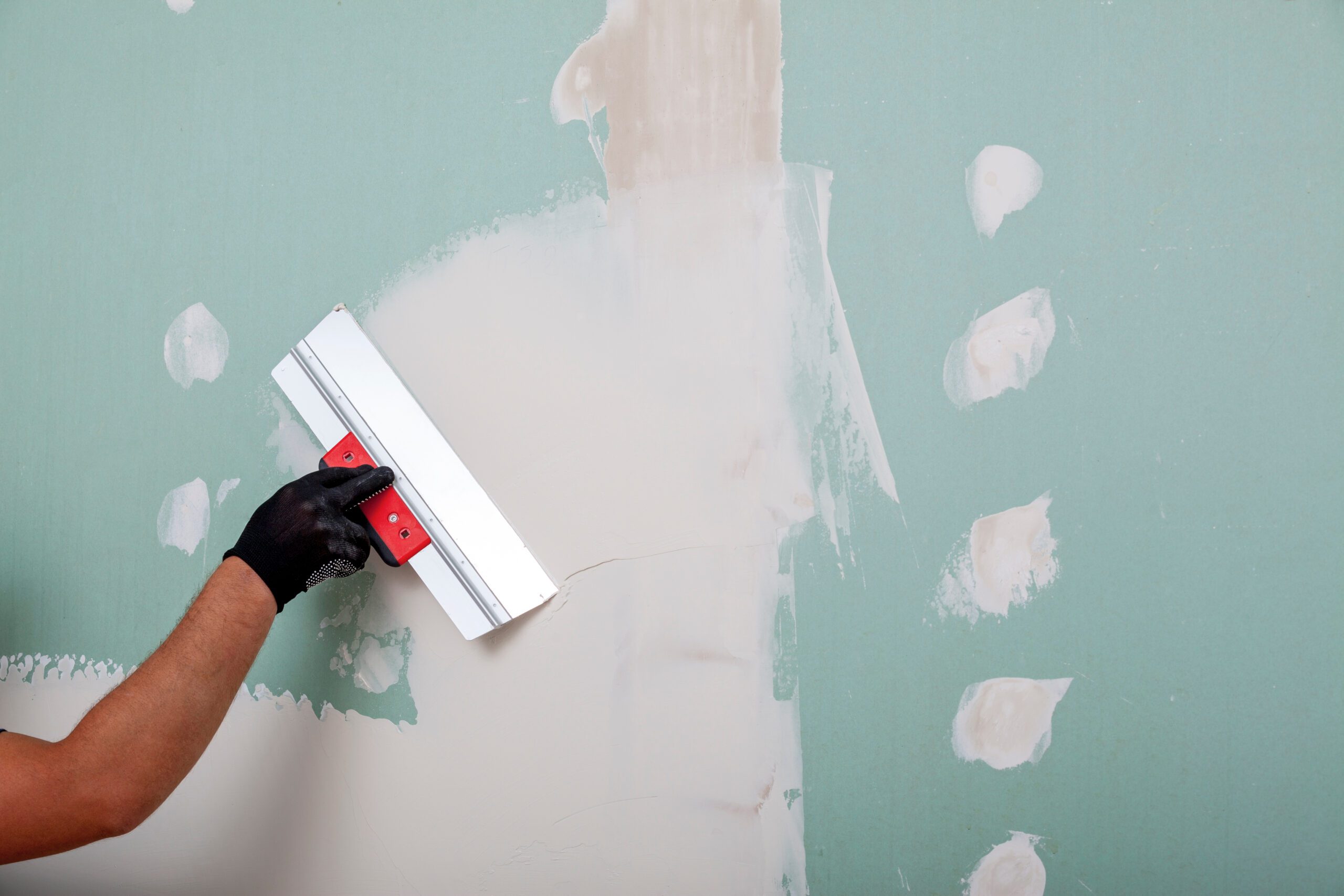Step-by-Step Approaches to Getting Flawless Drywall Repair and Setup
Achieving perfect drywall repair work and installation calls for a systematic method. It involves comprehending the various sorts of drywall and the devices essential for the task. Appropriate location prep work is vital before beginning any job. drywall contractors. Each step, from patching openings to setting up new sheets, demands interest to information. The procedure doesn't end with installation; finishing techniques are important for a sleek appearance. The following actions will assure a smooth result, however exactly what do they entail?
Understanding Drywall Kind and Tools Needed

The installation tools are similarly essential. An energy blade is vital for cutting drywall sheets, while a drywall saw can assist in making specific cuts for fixtures or outlets. T-squares assure accurate measurements, and drywall screws or nails safeguard the panels to wall surface studs. Additionally, a drywall lift can promote the installment of huge sheets, lessening physical strain. Knowledge with these types and tools significantly adds to the efficiency and high quality of drywall tasks.
Preparing the Location for Repair Work or Setup
Preparing the area for drywall repair work or installment is essential to guarantee a smooth and efficient procedure. The surrounding area should be removed of furniture and various other obstacles to give sufficient functioning space. This not only guarantees safety yet additionally prevents damages to belongings. Next, it is necessary to cover the floor with ground cloth to catch any particles or dirt generated during the job.
Furthermore, the walls need to be inspected for any kind of loosened paint or wallpaper that may conflict with bond. Eliminating these elements develops a clean surface area for the brand-new drywall. Before beginning, it is a good idea to shut off power to electric outlets or components around. Making certain adequate lights in the work area will certainly further improve visibility and emphasis throughout the repair or setup procedure. Drywall Repair Ogden UT. By carefully preparing the location, one lays the groundwork for a successful drywall task
Step-by-Step Process for Patching Holes

Patching openings in drywall needs a methodical technique to ensure a smooth repair work. The primary step involves reviewing the size of the opening. For little holes, a patching compound may be sufficient, while larger holes demand a patch. Next, the damaged area needs to be cleansed and prepared by removing any kind of loosened debris.
For tiny holes, using spackling substance with a putty see it here knife is recommended, smoothing it over the opening and feathering the sides. As soon as dry, sanding Look At This the location assures a smooth finish. For bigger openings, a drywall spot should be reduced to size, positioned over the hole, and protected with screws. After mounting the patch, the exact same spackling procedure is duplicated, followed by fining sand.
The patched area has to be topped and repainted to match the surrounding wall surface. This careful procedure ensures an expert look and extends the lifespan of the repair.
Mounting New Drywall Sheets: A Comprehensive Guide
Mounting new drywall sheets calls for cautious planning and implementation to ensure a visually appealing and strong surface. The location should be gauged precisely to determine the number of sheets required. It is vital to pick the best density, commonly 1/2-inch for interior wall surfaces and 5/8-inch for ceilings or fire-rated applications.
Next, the studs or structure ought to be evaluated for any type of abnormalities, ensuring they are aligned and appropriately spaced. When placing the Visit Your URL drywall sheets, they ought to be placed flat to minimize seams and enhance structural honesty. A drywall lift can be advantageous for above installments.
Attaching the sheets with drywall screws at appropriate intervals makes specific a safe and secure installation. It is necessary to countersink the screws somewhat listed below the surface to get ready for the completing procedure. Adhering to these standards will lead to a solid foundation, prepared for the next action in drywall finishing.
Finishing Touches: Taping, Mudding, and Sanding Strategies
As soon as the drywall sheets are firmly secured, the focus shifts to the complements that will certainly offer a polished appearance. This procedure starts with taping, utilizing either paper or fiberglass mesh tape to cover the joints in between sheets. The tape ensures a smooth shift, lowering the threat of breaking. Complying with taping, mudding is essential; a joint substance is applied over the tape to load spaces and produce a seamless surface. Usually, several layers are needed, every one feathery out further than the previous to minimize exposure.
After adequate drying time, sanding is the last step in attaining a perfect finish. A fine-grit sandpaper is made use of to smooth the dried out compound, ensuring there are no imperfections or bumps. Interest to information during this stage is considerable, as it considerably impacts the general look of the wall surface. The end outcome must be an even, professional-looking surface all set for priming and painting.
Regularly Asked Concerns
Just how Do I Choose the Right Drywall Density for My Project?
To choose the right drywall density, think about the project's purpose, area, and structural needs. Requirement densities include 1/2-inch for basic use and 5/8-inch for fire-rated applications, guaranteeing resilience and conformity with building codes.
/Bhg-how-to-patch-dry-wall-hero-2431_ErCJ7v2pKcVADoq5rBc19m-9bc6054b40c84af4bd3ba2b19b3693b9.jpg)
Can I Mount Drywall Over Existing Drywall?
Yes, setting up drywall over existing drywall is feasible. However, it is important to assure the underlying surface area is secure and totally free from damages. Appropriate attachment and factor to consider of density are essential for a successful installation.
What Are the Best Practices for Drywall Disposal?
The very best methods for drywall disposal include recycling when possible, making use of neighborhood waste monitoring services, and following standards for hazardous products if appropriate. Interior Painting. Correctly identifying and sealing waste warranties compliance and safety throughout disposal
For how long Should I Wait for Mud to Dry Prior To Sanding?
Usually, one ought to wait 24-hour for drywall mud to dry prior to fining sand. Drying time can differ based on moisture and temperature, so checking for a company structure is advisable prior to proceeding.
Exist Eco-Friendly Drywall Options Available?
Yes, green drywall options are offered. These alternatives typically make use of recycled materials, low-VOC adhesives, and sustainable manufacturing approaches, decreasing ecological influence while offering reliable insulation and resilience for numerous building and restoration tasks.
An utility blade is vital for cutting drywall sheets, while a drywall saw can assist in making exact cuts for fixtures or outlets. Preparing the location for drywall fixing or installation is important to ensure a efficient and smooth process. Covering openings in drywall needs an organized technique to guarantee a seamless fixing. Installing new drywall sheets requires cautious preparation and execution to ensure a tough and visually attractive surface. Yes, mounting drywall over existing drywall is possible.